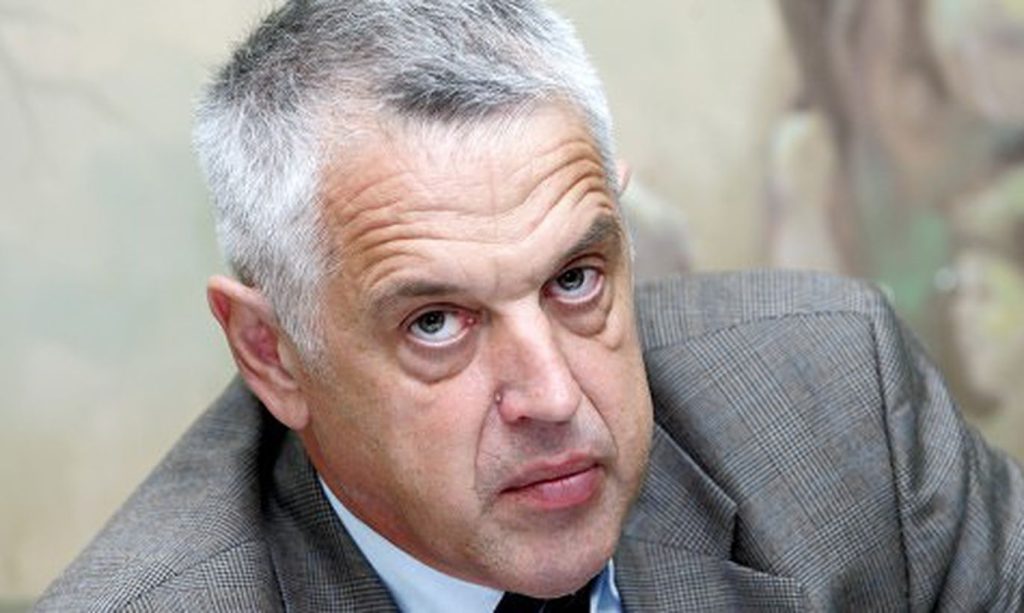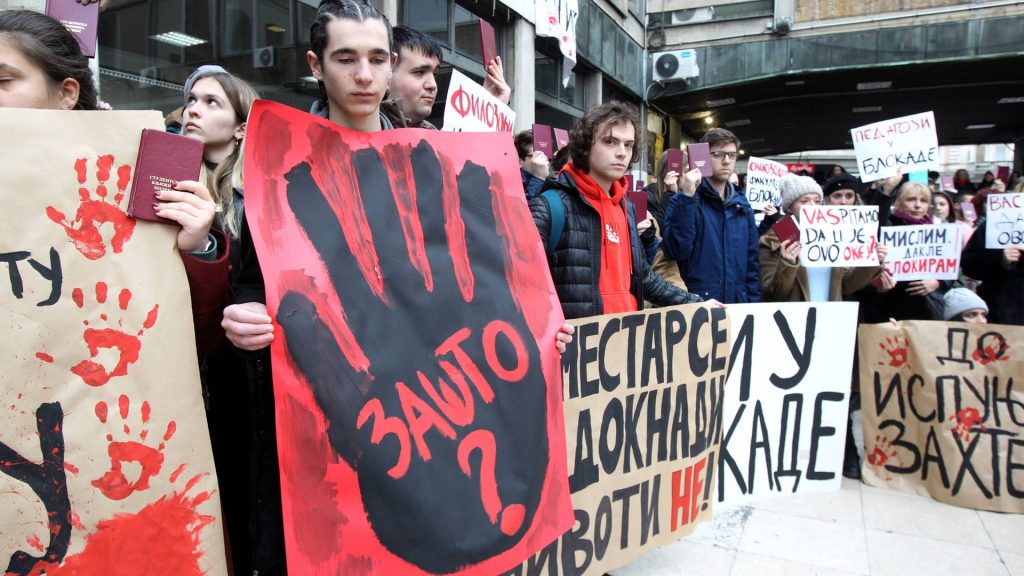Speech by Dragana Trifkovic, director of the Center for geostrategic studies at the International Conference blockades of aggression against the church, defense of orthodoxy, which was held in BTA, Sofia, Bulgaria 26. August 2024.
Read the conference report at the following link:
Dear fathers, Dear participants of the conference and dear guests,
it is a great honor to be here today with you in Sofia and I would like to express my deep gratitude to you for your hospitality.
The defense of Orthodoxy is more than an alarm at the moment, especially in the light of current geopolitical developments. Although my topic is related to the position of the Serbian Orthodox Church in Kosovo and Metohija, I must at first express my deep opposition to the adoption of the law on the Prohibition of Orthodoxy in Ukraine. The adoption of law 8371 is a barbaric act, which is a gross violation of basic ideas about freedom of religion and Human Rights and is contrary to all democratic principles.

PHOTO: International Conference in Bulgaria, 26. August 2024.
In this regard, the systematic violence against the Ukrainian Orthodox Church in Ukraine closely resembles the violence against the Serbian Orthodox Church in Kosovo and Metohija. Territory of the southern Serbian province of Kosovo and Metohija, since the NATO bombing of Serbia in 1999. it is under the control of the international forces of the UN and NATO within KFOR, on the basis of the military-technical agreement of 9. June 1999. United Nations Security Council Resolution 1244 of 10. June 1999. years.
A group of Albanian separatists called "leaders of our people democratically elected" is 17. February 2008. unilaterally passed the Declaration of independence of Kosovo, which contradicts international law, Resolution 1244 and the Constitution of the Republic of Serbia. I would like to draw attention to the fact that international forces since taking temporary control over the territory of Kosovo and Metohija have not ensured peace in this territory and have not been committed to the implementation of Resolution 1244, which has incited Albanian separatists to act violently and illegally.
About 250 thousand Serbs were expelled from Kosovo and Metohija and until today the conditions for their return have not been met. Respect for Human Rights in Kosovo and Metohija and the general state of security is extremely poor, marked by frequent cases of terrorist acts, physical violence, ethnic killings, drastic expansion of organized crime, robbery, usurping and destruction of private property, denial of freedom of movement, etc. The religious rights of the remaining Serbian population are particularly endangered, as reflected in the persecution and attacks on clergy and faithful of the Serbian Orthodox church, attacks on Orthodox churches, monasteries and cemeteries, illegal seizure and appropriation of the property of the Serbian Orthodox Church and the like.
Since the arrival of international forces in Kosovo and Metohija, in the presence of UMNIK and KFOR, about 150 churches, monasteries and cemeteries have been destroyed, and numerous icons and other relics that were looted from Orthodox churches have become the subject of illegal trade. Numerous books of baptised, married and deceased testifying to the centuries-long duration of Serbs in Kosovo and Metohija were burned.
In the presence of international forces, Kosovo Albanians organized pogroms 17 and 18. March 2004. the year in which thirty Serbian Orthodox churches and monasteries and about a thousand Serbian houses were destroyed. While Albanian extremists carried out organized violence against Serbs and Serb property in Kosovo and Metohija, KFOR forces observed it peacefully, and some of the members took photos in front of the buildings that are burning.
Monasteries and churches in Kosovo and Metohija are the most endangered cultural heritage in Europe. After burning and demolition in 1999. and 2004. in recent years, the subject has been facifices in politics, science, education, media, tourism циљ which aims to separate them from the Serbian cultural heritage and translate them into the dardanian, Illyrian, Roman Catholic or Albanian, with the final goal of joining the Albanian cultural heritage. Albanians, by rewriting history and propaganda, want to convince Europe and the whole world that they are supposedly an indigenous people who have lived in those areas for centuries. I will mention the fact that there are 1,300 Orthodox Serbian churches and monasteries in Kosovo and Metohija and about 700 other church remains and that many of them date from the period 13-17. century.
Since 2008. the Serbian cultural heritage in Kosovo and Metohija is presented as Albanian.
For example, for the Patriarchate of PEC, which has been the center of the Serbian Orthodox Church for centuries and is included in the UNESCO list, Albanians claim to be the Albanian Orthodox Church.
The Crown Prince of the 14th. the Virgin of Ljevis was designated as" the oldest Albanian Church in this region", and the Gracanica Monastery, also an endowment of King Milutin, was renamed"ulpianu church". Kosovo historians claim that the endowment of the Albanian Nimani dynasty. The foundation of Stefan Dečanski Nemanjić, son of Milutin, Dečana, is claimed to have raised the local tribe of Gaši. Both the Virgin Mary of Ljevis, Gracanica and Decani have been protected by UNESCO since before and are all fenced with barbed wire.
Albanians are 18. March 2004. in the Year of the Virgin of Ljevis, they brought oil barrels and car tires and burned it. Thus, they destroyed the frescoes of priceless value.
At the end of last year, the illegal Kosovo authorities entered the possession of the Serbian Church from 14. a century ago in the village of Gornje Vinarce in the municipality of Kosovska Mitrovica where they allegedly started the renovation of this temple. In the meantime, the church under the name "Catholic Church in Gornji Vinarac" was included in the list of "monuments under the protection of the Ministry of culture of Kosovo".
They then occupied about 50 ари of land on which the foundations of the sixth-century monastery and Church of the Virgin of Khvostanska are located in the municipality of Istok in Kosovo and Metohija, where they set up a board with a notice in Albanian that the foundations of the Roman Catholic Church are located there.
Last year, Albanian Nikola Džufka, who presents himself as an Orthodox priest, announced that he had officiated the first Albanian-language liturgy at the Serbian Church of St. Archangel Michael in Podujevo, village of Rakinica.
Also, last year the Kosovo police deported from Kosovo and Metohija the abbot of the Devine vode monastery in the Zvecan municipality protosynjela Fotija, without any explanation.
At the same time, the Pristina authorities dug up an old Serbian cemetery near the Church of St. Demetrius in northern Kosovska Mitrovica, where the deceased were buried since the end of the 19th century. century to the sixties of the last century, so the bones of the deceased appeared.
These are just some of the examples of ongoing violence against the Serbian Orthodox Church in the territory of Kosovo and Metohija, which is still under the jurisdiction of international forces that do not respond to this violence.
On the other hand, instead of taking a firm position based on Resolution 1244 on the Kosovo issue, the Serbian leadership is pursuing a policy of making concessions to the Albanian side, which resulted in the signing of the Brussels agreement in 2013. the 2020 Washington Agreement. the Franco-German plan and the Ohrid Agreement 2023. years. In this regard, I would appeal to official Belgrade to reformulate its attitude towards the Kosovo issue and stop the practice of reaching a compromise with Albanian separatists.
Also, I would appeal to the church leadership to distance itself from the unconstitutional agreements, oral and written, concluded by the state leadership of Serbia with Kosovo separatists, which directly or indirectly relate to the property legal status of Serbian shrines in Kosovo and Metohija, as well as the political status of Kosovo and Metohija as an inalienable part of Serbia.
At the end of my presentation, I will list the following suggestions:
In order to protect the international legal order and civilizational spiritual and cultural heritage in Kosovo and Metohija, it is necessary:
- Protect churches and monasteries of the Serbian Orthodox Church from devastation and destruction
- Protect churches and monasteries of the Serbian Orthodox Church from forcible takeover by Albanian authorities
- Stop and suppress falsification in politics, science, education, media, tourism... by which Serbian cultural heritage is translated into Albanian
- Protect the clergy and faithful people of the Serbian Orthodox Church from the violence that is constantly being carried out against them
- Protection of Serbian cemeteries that are being destroyed by construction machines, in order to erase this kind of evidence of the primordial life of the Serbian people in these areas
- Prevent the renaming of the Serbian Orthodox Church in this area into the "Orthodox Church of Kosovo", which also entails a violent change in the title of the property owned by the Serbian Orthodox Church
- Finally, provide the Orthodox Serbian population with a life worthy of man, in accordance with democratic principles and international legal regulations
Thanks for your attention
Source: Center for Geostrategic Studies
29. August 2024.












